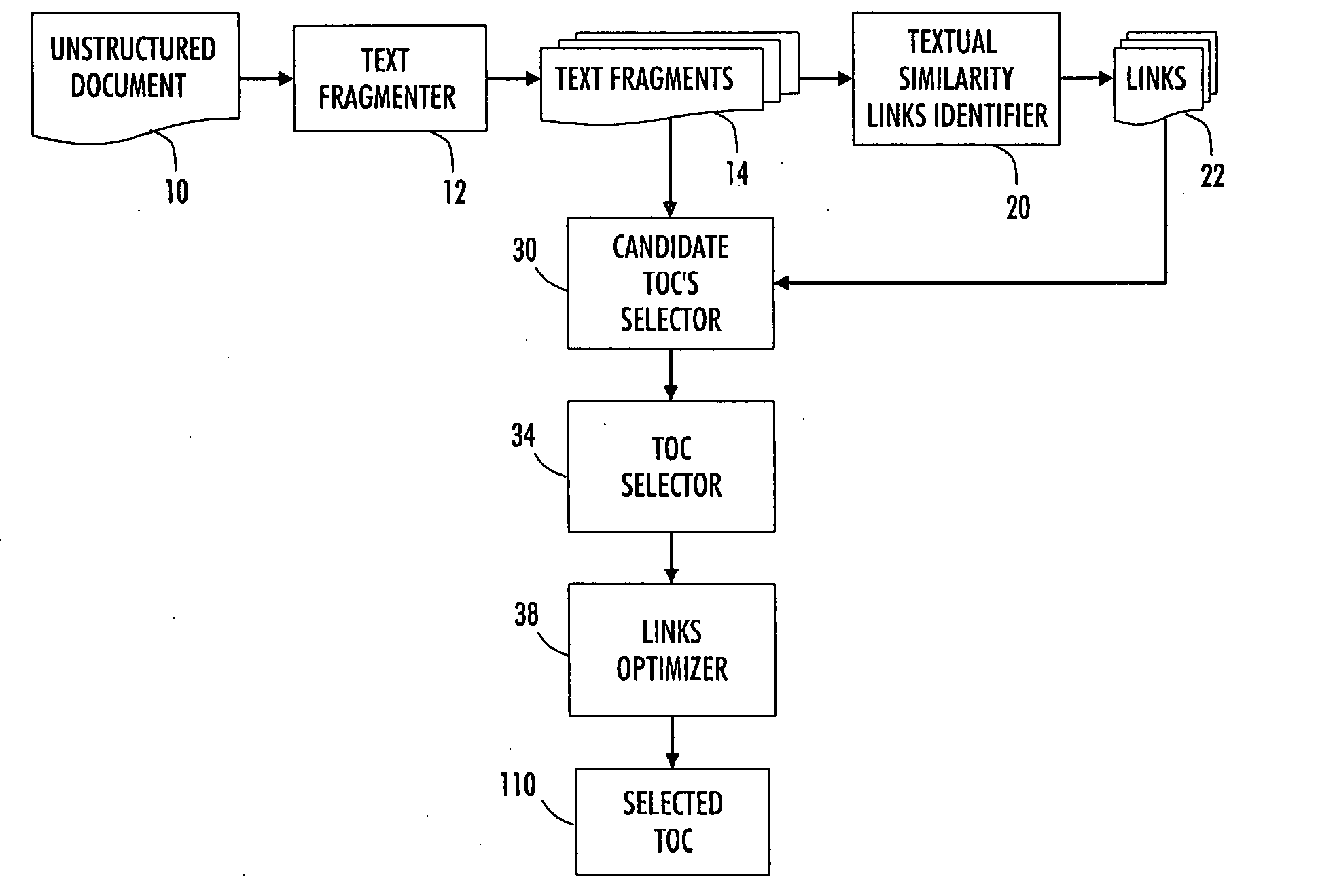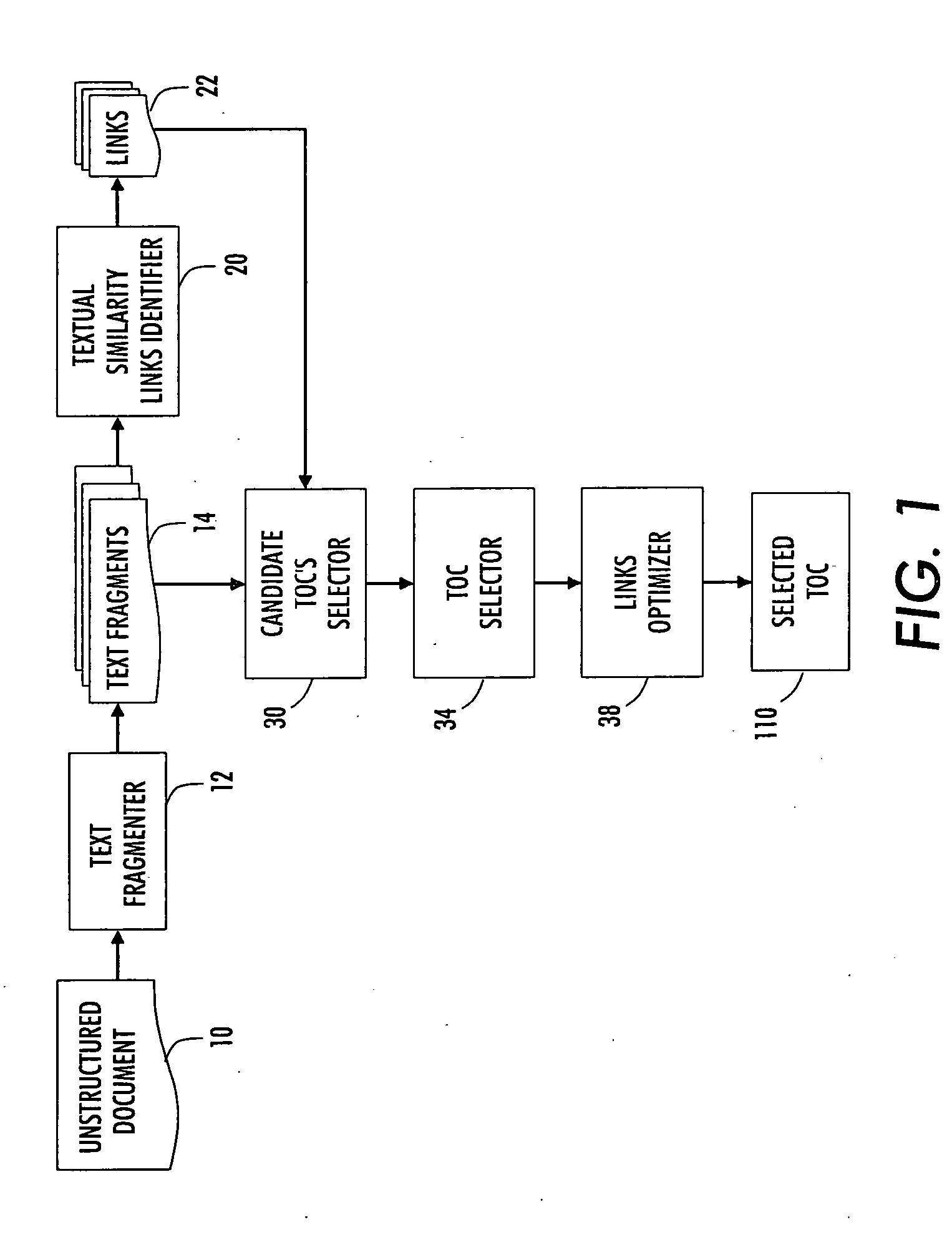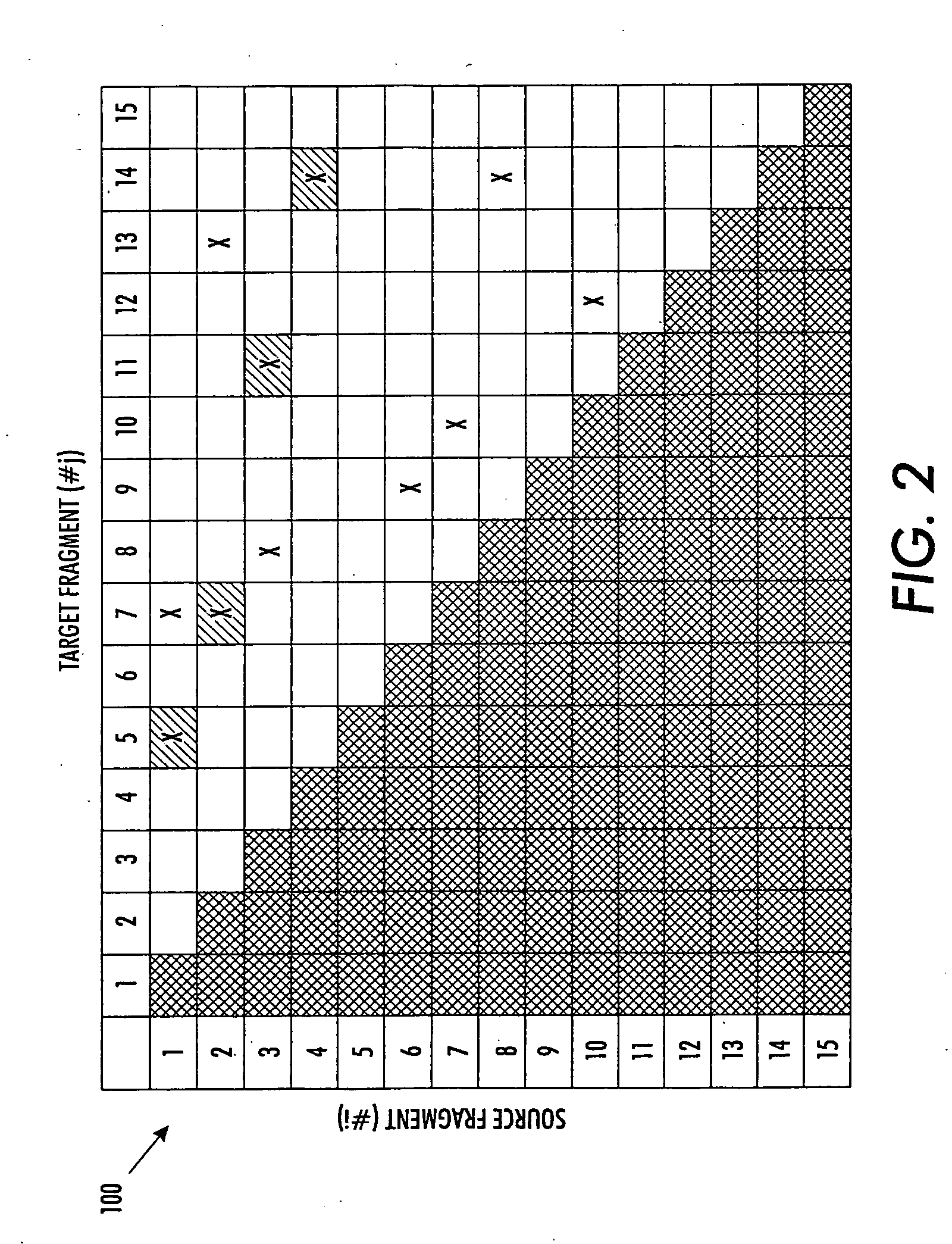Method and apparatus for detecting a table of contents and reference determination
a table of contents and reference determination technology, applied in the field of information storage and processing arts, can solve the problems of inability to reliably extract tables of content from unstructured documents, lack of structural information, and inability to provide limited or no structural information,
- Summary
- Abstract
- Description
- Claims
- Application Information
AI Technical Summary
Benefits of technology
Problems solved by technology
Method used
Image
Examples
Embodiment Construction
[0016] With reference to FIG. 1, an apparatus is described for identifying a table of contents in an unstructured document 10. A text fragmenter 12 breaks the unstructured document 10 into an ordered sequence of text fragments 14. Typically, the unstructured document 10 is loaded as a list of text strings from a text or XML file produced from a document in an input format (such as Adobe PDF, Word FrameMaker, or so forth), using an off-the-shelf converter. A paper document is suitably scanned using an optical scanner and processed by optical character recognition (OCR). For a text document, each line suitably becomes a fragment ordered line by line. For an XML or HTML document, each PCDATA suitably becomes a text fragment.
[0017] Several strategies can be used to order the textual fragments: depth-first left-to-right traversal (document order) or use of the fragment position in the page. Also, the relationship between XML nodes and text fragments can he preserved in order to map the ...
PUM
 Login to View More
Login to View More Abstract
Description
Claims
Application Information
 Login to View More
Login to View More - R&D
- Intellectual Property
- Life Sciences
- Materials
- Tech Scout
- Unparalleled Data Quality
- Higher Quality Content
- 60% Fewer Hallucinations
Browse by: Latest US Patents, China's latest patents, Technical Efficacy Thesaurus, Application Domain, Technology Topic, Popular Technical Reports.
© 2025 PatSnap. All rights reserved.Legal|Privacy policy|Modern Slavery Act Transparency Statement|Sitemap|About US| Contact US: help@patsnap.com



